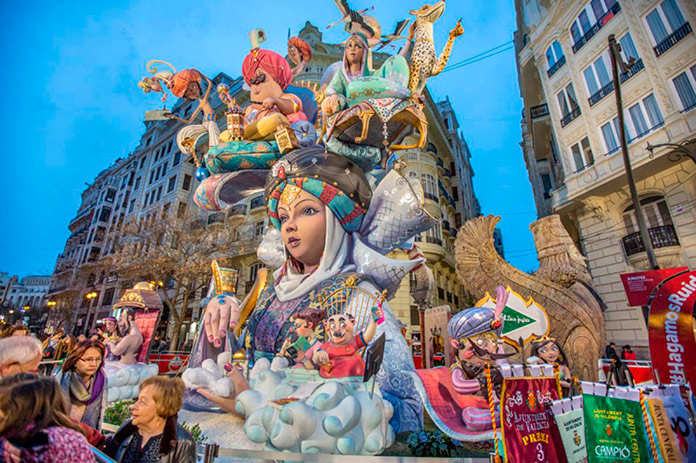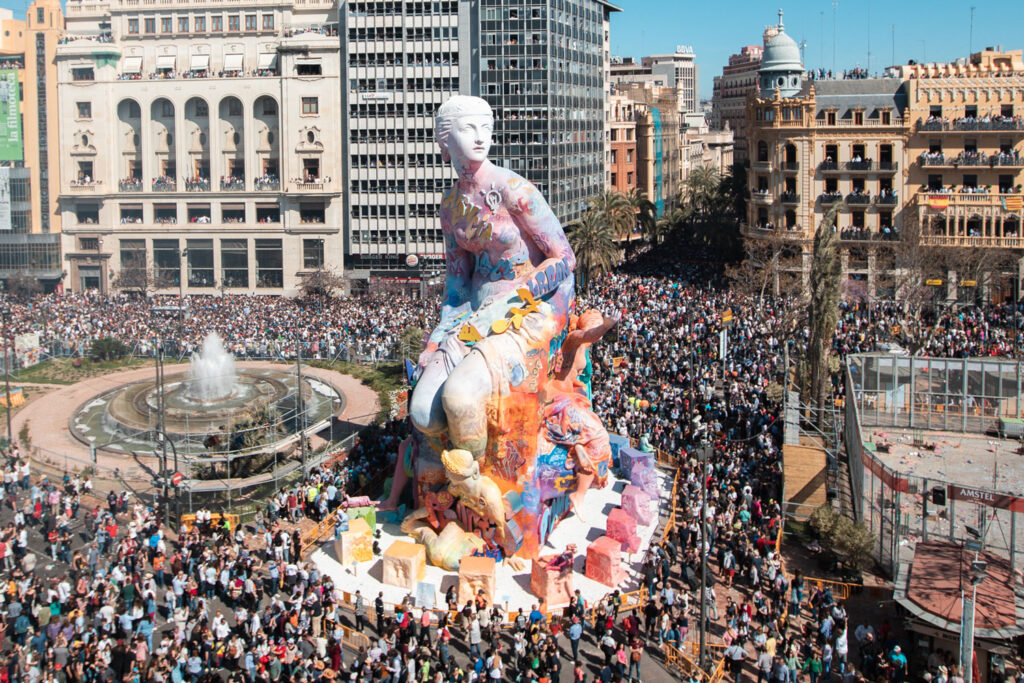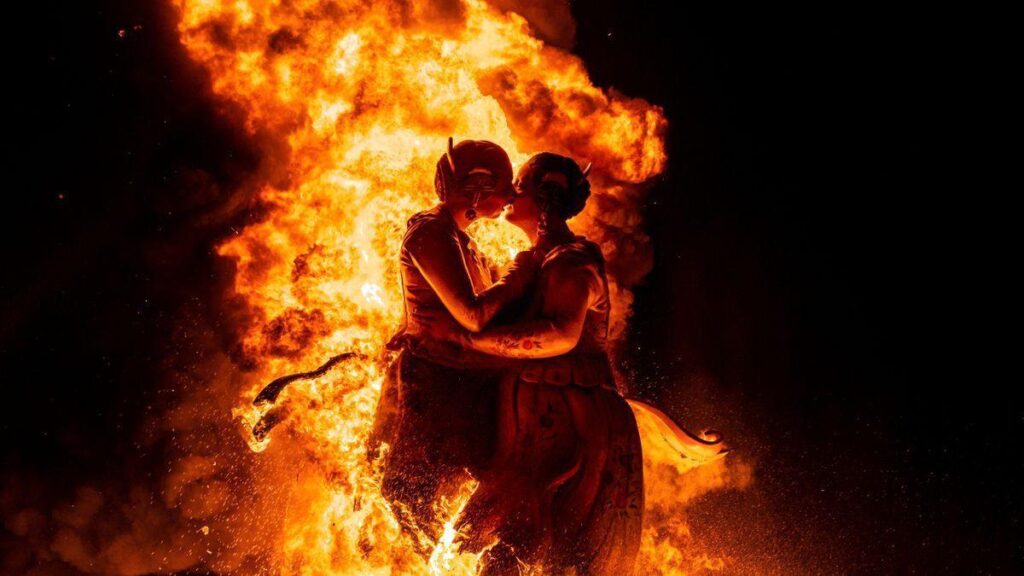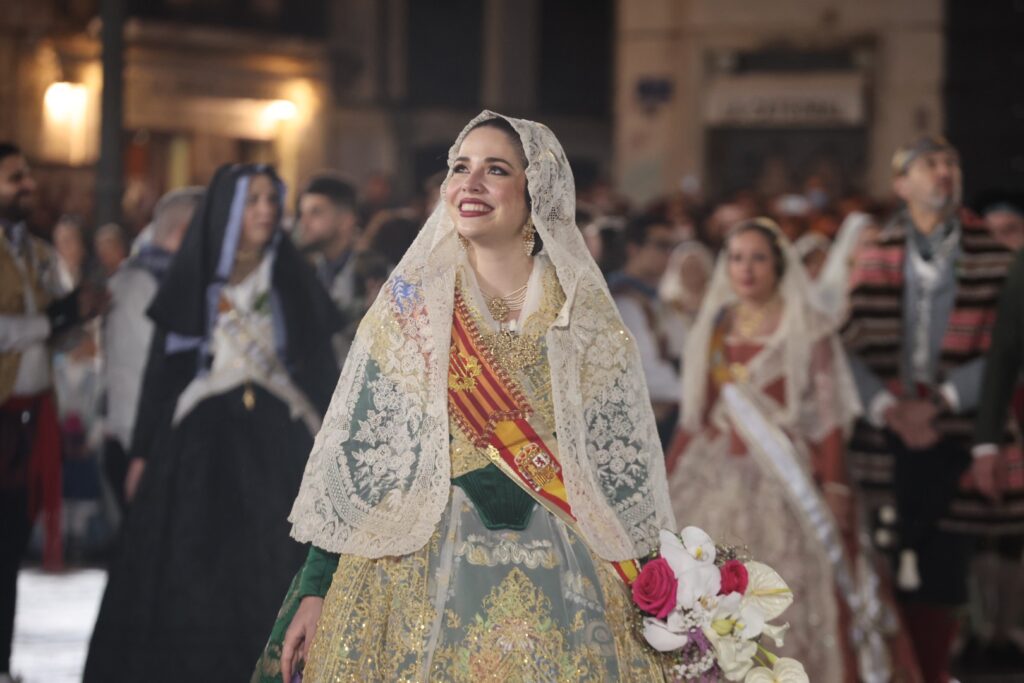Ninots, mascletás, Paquito el Chocolatero, firecrackers and lots of fun, are some of the elements that make up one of the most popular festivals in Spain, Las Fallas in Valencia. In this article we tell you a little about the Fallas, what they consist of and what you can witness if you decide to live the Fallas in Valencia this year.
Remember that we have a group trip to the Fallas of Valencia 2024 scheduled for Saturday 16 and Sunday March 17, you can see all the information and book in our official link of Fallas of Valencia 2024from Madrid.
What are the Fallas of Valencia?
The fallas have their origin in the hand of a guild of carpenters of the city and its patron saint, San José. They had the custom of burning their junk and useless things on the eve of this festivity, that is to say, on March 19, a date that continues to this day. It was not until the 18th century that this tradition, along with the things that were burned, would adopt the name Fallas (from the Latin fac[u]la, diminutive of fax, ‘torch’).

In the following years, this event would acquire a more critical tone, which caused them to be persecuted in the second half of the 19th century, along with carnivals. Because of this, a whole movement of vindication of the traditions was born, which culminated in the fact that nowadays trophies are awarded to the best Fallas monuments.
Also, UNESCOawarded the Fallas the distinction of Intangible Heritage of Humanity, due to its great popularity and importance.
When are the Fallas celebrated?
This Valencian festival, unlike others in Spain, is celebrated on the same dates every year, always between March 14 and 19 to honor St. Joseph (although from the 01st of the month there are already mascletás). All this as a prelude to spring, mixing culture, history, festivities, gastronomy and music.

What are the Fallas of Valencia?
The noise, the colors and the giant figures are part of the scenario that make up the Fallas, but above all, this festival also seeks to be a satire, this with its large constructions formed by ninots that laugh at everything and everyone. As every year, all the ninots will be burned to continue the tradition of the carpenters’ guild, however, there are always some ninots that are saved from the fire and become part of the Fallas museum.

The central night of this festival is the Cremà de las Fallas, that moment in which all the figures burn and which takes place on the night of March 19. The night before is marked by the Nit del Foc, the spectacular fireworks display that marks the beginning of the end of the festivities.
Another of the rites that make up this great festival is the offering to the Fallas, when thousands of falleras and falleros go to the Plaza de la Virgen de Valencia with bouquets of carnations to dress the Virgen de los Desamparados. The great representative of the whole celebration is the Fallera Mayor, which has been elected since 1931. They are chosen by a jury and act as ambassadors of the festival during the fallas.

All in all, we believe that you don’t need any more to motivate you to witness with your own eyes the noise, the color and the fire of the Fallas of Valencia.
Remember that we have our group outing scheduled to the Fallas of Valencia 2024 and you can check and book it on our official link.
Also find us on INSTAGRAM

